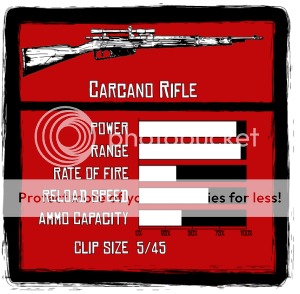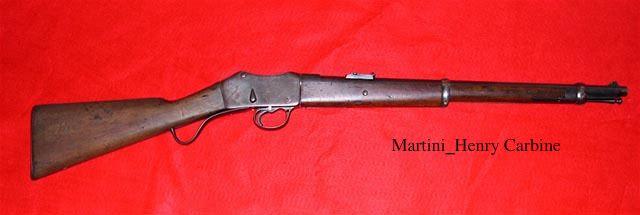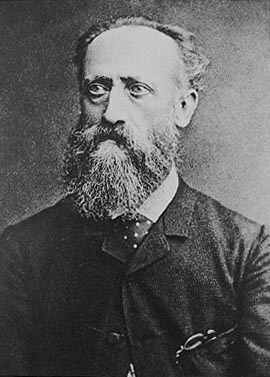 I thought I would combine two rather infamous rifles into one entry. If nothing else, they both have a long and interesting history: The Carcano bolt-action rifles and carbines; and the Martini-Henry breech-loading single-shot lever-actuated rifle. Rather then copy a lot of tedious text, filled with gun jargon, I will just give a short summary of each. This is one of those subjects which tie into a lot of other subjects. Perhaps we can look at that vast history more in-depth some other time.
I thought I would combine two rather infamous rifles into one entry. If nothing else, they both have a long and interesting history: The Carcano bolt-action rifles and carbines; and the Martini-Henry breech-loading single-shot lever-actuated rifle. Rather then copy a lot of tedious text, filled with gun jargon, I will just give a short summary of each. This is one of those subjects which tie into a lot of other subjects. Perhaps we can look at that vast history more in-depth some other time.Carcano
This rifle--actually it was a series--is best known as the rifle which some believe was used to assassinate President Kennedy. It's regarded as being of relatively poor quality; but was attractive due to it's affordability. Incredibly, it was the official rifle for the Italian army from 1891 to 1981. To a gun enthusiast, it was "a piece of junk," but that's somewhat of an exaggeration I think. It was viable; a killer.
Wikipedia: Carcano is the frequently used name for a series of Italian bolt-action military rifles and carbines. Introduced in 1891, this rifle was chambered for the rimless 6.5×52mm Mannlicher-Carcano Cartuccia Modello 1895 cartridge. It was developed by the chief technician Salvatore Carcano at the Turin Army Arsenal in 1890 and called the Model 91 (M91). Successively replacing the previous Vetterli-Vitali rifles and carbines in 10.35×47mmR, it was produced from 1892 to 1945. The M91 was used in both rifle and carbine form by most Italian troops during the First World War and by Italian and some German forces during Second World War. The rifle was also used during the Winter War by Finland, and again by regular and irregular forces in Syria, Libya, Tunisia, and Algeria during various postwar conflicts in those countries.
The Type I Carcano rifle was produced by Italy for the Japanese Empire prior to World War II. After the invasion of China, all Arisaka production was required for use of the Imperial Army, so the Imperial Navy contracted with Italy for this weapon in 1937. The Type I is based on the Type 38 rifle and utilizes a Carcano action, but retains the Arisaka/Mauser type 5-round box magazine. The Type I was utilized primarily by Japanese Imperial Naval Forces and was chambered for the Japanese 6.5×50mm Arisaka cartridge. Approximately 60,000 Type I rifles were produced by Italian arsenals for Japan.
Wars fought with Carcano rifles:
Mahdist War,
First Italo-Ethiopian War,
Boxer Rebellion,
Italo-Turkish War,
World War I,
Second Italo-Abyssinian War,
Winter War,
World War II,
Libyan civil war
Users of Carcano rifles:
Albania
Bulgaria Kingdom of Bulgaria
Empire of Japan
Finland
Italy
Italy Kingdom of Italy (1861-1946)
Italian Social Republic
Nazi Germany
Libya National Liberation Army (Libya)
 Martini-Henry
Martini-HenryThe Martini-Henry rifle is best known for it's use by the British Empire for several decades during their imperial wars. It was a heavy-duty, single-shot rifle, effective at long range, with a bayonet. In other words, truly a "hand-held cannon." Think 'Mutiny on the Bounty' for more of a historical perspective. The Martini-Henry mechanism was invented by American Henry O. Peabody in Boston in 1862, and later perfected by Swiss Friedrich von Martini in 1871, after being "combined with the polygonal barrel rifling designed by Scotsman Alexander Henry." Martini-Henrys have floated around the world long afterwards; and are still being used in some corners of the world over 120 years after the last one was produced.
 Wikipedia: The Martini-Henry was a breech-loading single-shot lever-actuated rifle adopted by the British Army, combining the dropping-block action first developed by Henry O. Peabody (in his Peabody rifle) and improved by the Swiss designer Friedrich von Martini, whose work in bringing the cocking and striker mechanism all within the receiver greatly improved the operation of the rifle, which new iteration was combined with the polygonal barrel rifling designed by Scotsman Alexander Henry. It first entered service in 1871, eventually replacing the Snider-Enfield, a muzzle-loader conversion to the cartridge system. Martini-Henry variants were used throughout the British Empire for 30 years. Though the Snider was the first breechloader firing a metallic cartridge in regular British service, the Martini was designed from the outset as a breechloader and was both faster firing and had a longer range.
Wikipedia: The Martini-Henry was a breech-loading single-shot lever-actuated rifle adopted by the British Army, combining the dropping-block action first developed by Henry O. Peabody (in his Peabody rifle) and improved by the Swiss designer Friedrich von Martini, whose work in bringing the cocking and striker mechanism all within the receiver greatly improved the operation of the rifle, which new iteration was combined with the polygonal barrel rifling designed by Scotsman Alexander Henry. It first entered service in 1871, eventually replacing the Snider-Enfield, a muzzle-loader conversion to the cartridge system. Martini-Henry variants were used throughout the British Empire for 30 years. Though the Snider was the first breechloader firing a metallic cartridge in regular British service, the Martini was designed from the outset as a breechloader and was both faster firing and had a longer range.There are four classes of the Martini-Henry rifle: Mark I (released in June 1871), Mark II, Mark III, and Mark IV. There was also an 1877 carbine version with variations that included a Garrison Artillery Carbine, an Artillery Carbine (Mark I, Mark II, and Mark III), and smaller versions designed as training rifles for military cadets. The Mark IV Martini-Henry rifle ended production in the year 1889, but remained in service throughout the British Empire until the end of the First World War. It was seen in use by some Afghan tribesmen as late as the Soviet invasion. Early in 2010 and 2011, United States Marines recovered at least three from various Taliban weapons caches in Marjah. In April 2011, another Martini-Henry rifle was found near Orgun in Paktika Province by United States Army's 101st Airborne Division (Air Assault).
The Martini-Henry was copied on a large scale by North-West Frontier Province gunsmiths. Their weapons were of a poorer quality than those made by Royal Small Arms Factory, Enfield, but accurate down to the proof markings. The chief manufacturers were the Adam Khel Afridi, who lived around the Khyber Pass. The British called such weapons, "Pass made rifles."
Wars fought with Martini-Henry rifles:
British colonial wars
Second Anglo-Afghan War
Anglo-Zulu War
First Boer War
Users of Martini-Henry rifles:
United Kingdom & Colonies
.

No comments:
Post a Comment